Chinese bowl Vietnam Blue de Huë
Ø top edge 9 cm Ø base ring 3.7 cm H 4.8 cm
€ 350,00
Prijs incl. 6% BTW & Verzendingskosten
Meer informatie
Chinese blue and white export porcelain for the Vietnamese market. The best “Bleu de Huê” was ordered by the Vietnamese court through diplomatic missions to China. Most of them were produced in Jingdezhen with special designs and brands. Huê is the name of the ancient city where the Vietnamese king lived at the time. The designs are special, characteristic and have a light character of being Japanese. Some have poems of their own. A common two-character mark reads Nei Fu and can be translated as “Inner Court”. Blue de Huê wares were made in China for the Vietnamese dynasties in the 18th and 19th centuries until after the revolution led by Dr. Sun Yat-sen. But in the nineteenth century, as the middle class grew in size and economic power, it seemed that more Chinese manufacturers, not only in Jingdezhen but also at other Jiangxi kilns, saw this potential market and produced parts for it independently. It seems that these were not very popular. At the end of the 19th century, metal rims were popular to protect the rim from damage. Some porcelains seem to have been ordered with other marks for the princes, princesses and others with lower ranks still living in the palace such as Ngoc (Jade), Ngoan Ngoc (Jade bauble), Tran ngoan (precious bauble), ect., but of a high quality. The Neifu mark seems to start around 1841-1883. On display is a ‘Bleu de Huê’ blue and white thin-walled porcelain bowl on a round foot, China for the Annamese court in Vietnam. Hue (Huế) is the name of the ancient city where the Vietnamese king lived. On the bottom it bears a Qianlong brand in a rectangle, but it is 19th century. Delicately potted, with slightly rounded walls, on a wide high round base, decorated on the outside with a well painted scene in underglaze cobalt blue depicting an elderly bearded Chinese fisherman on a rocky bank under a pine tree. The legendary historical scene represents Jiang Taigong (Jiāng Tàigōng, 姜太公), also known as Jiang Ziya, fishing on the Wee Swui River (Wei River, 渭水). On the other hand, hand-painted calligraphy: 渭水投竿日 / 岐山入夢時 (Vị thủy đầu can nhật, / Kỳ sơn nhập mộng thời), ‘The day he was fishing on the Wei River / Mount Qi has a dream while sleeping’ . The bowl depicts a story commonly known as “Jiang Taigong Fish”將太公釣魚. While hunting, the king of Zhou came across this old man who was fishing. Although his hook was straight (rather than curved), he had no trouble catching fish. Seeing that this was no ordinary man, the Zhou King knew he had to recruit him. Jiang eventually went on to help the Zhou king and his son overthrow the Shang dynasty and establish the Zhou dynasty. Single blue line above the foot edge and double line below the top edge. The Interior is not decorated. Four character mark in a rectangular frame in the center of the back. Dates to be dated 2nd half 19th century, Nguyễn dynasty, Tu Duc reign(1848-1883). Rare copy.
Condition: Apart from minimal firing flaws on the inside – perfect condition.
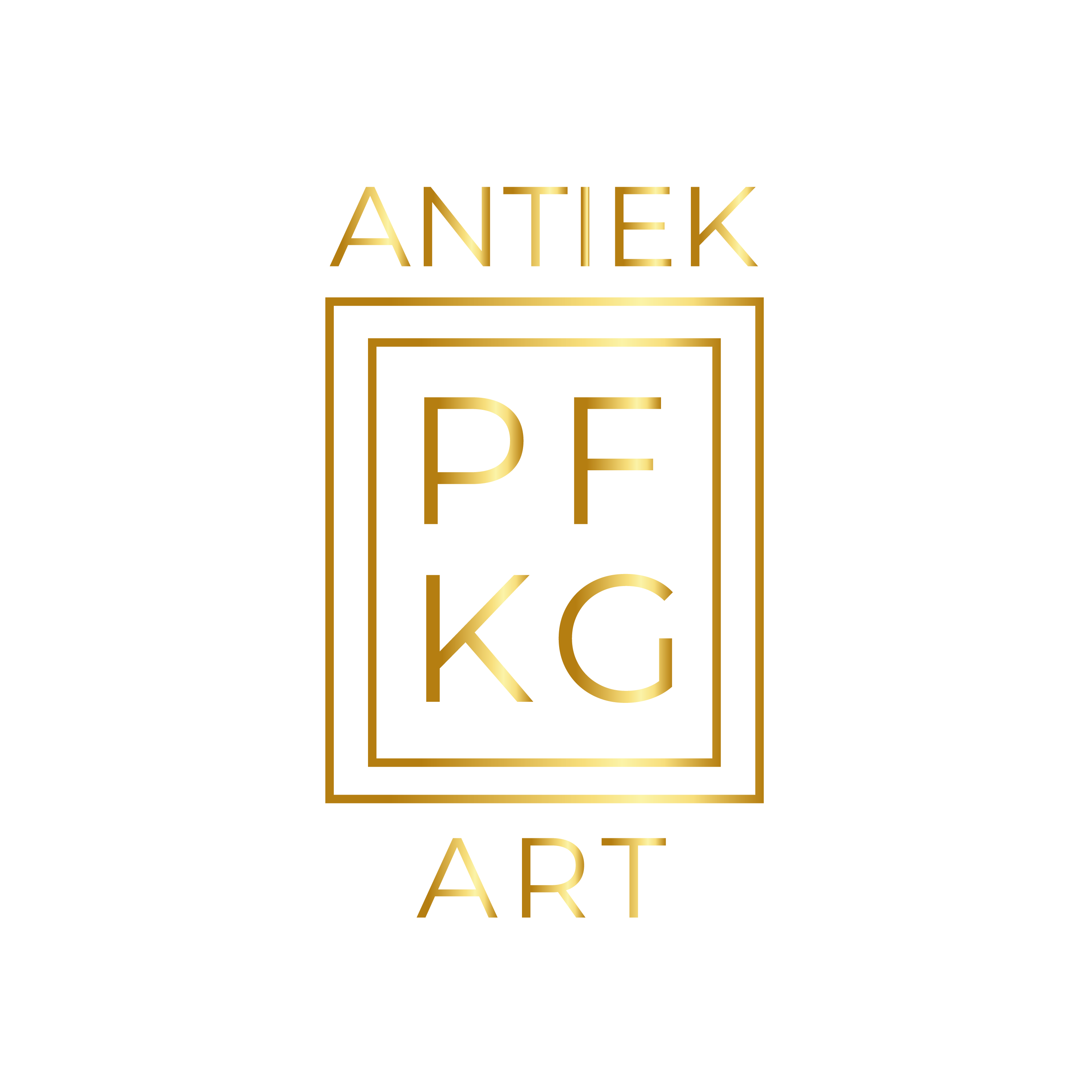
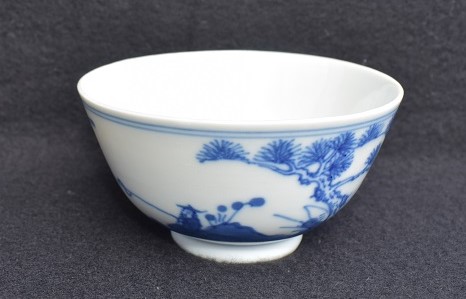
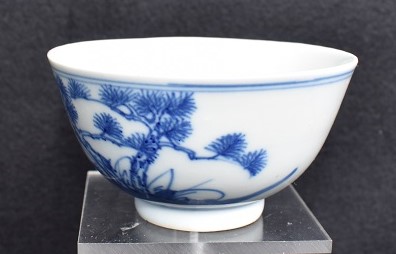
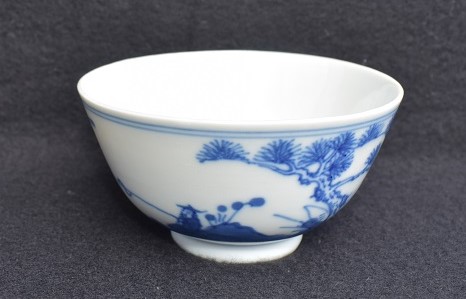
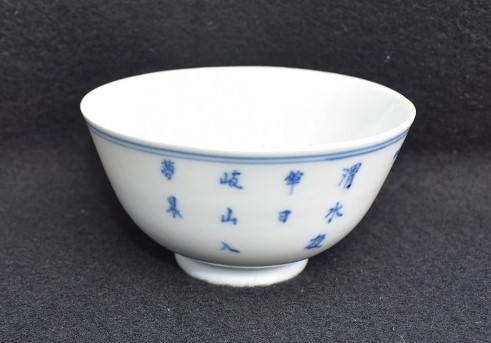

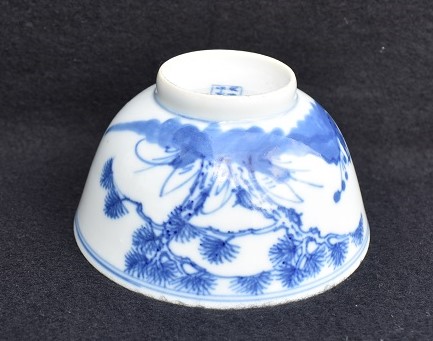
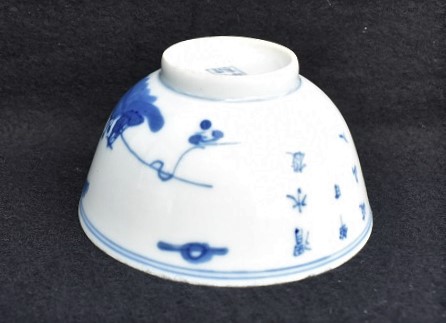
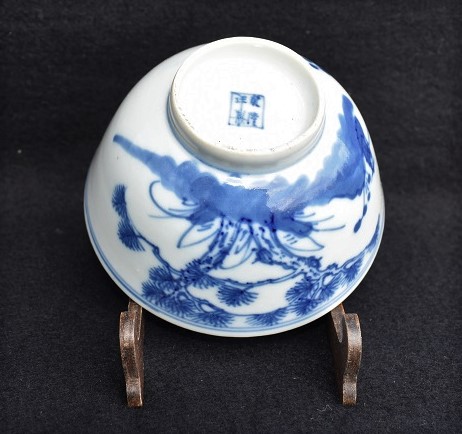
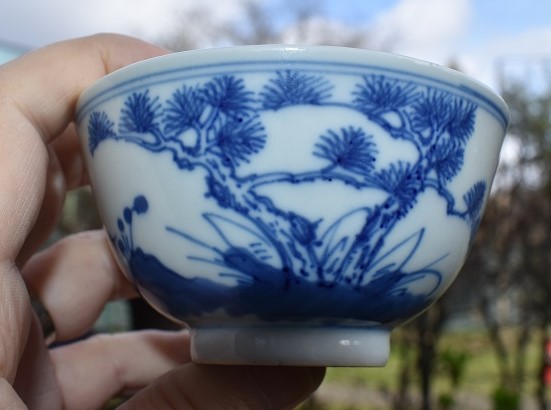
Reviews